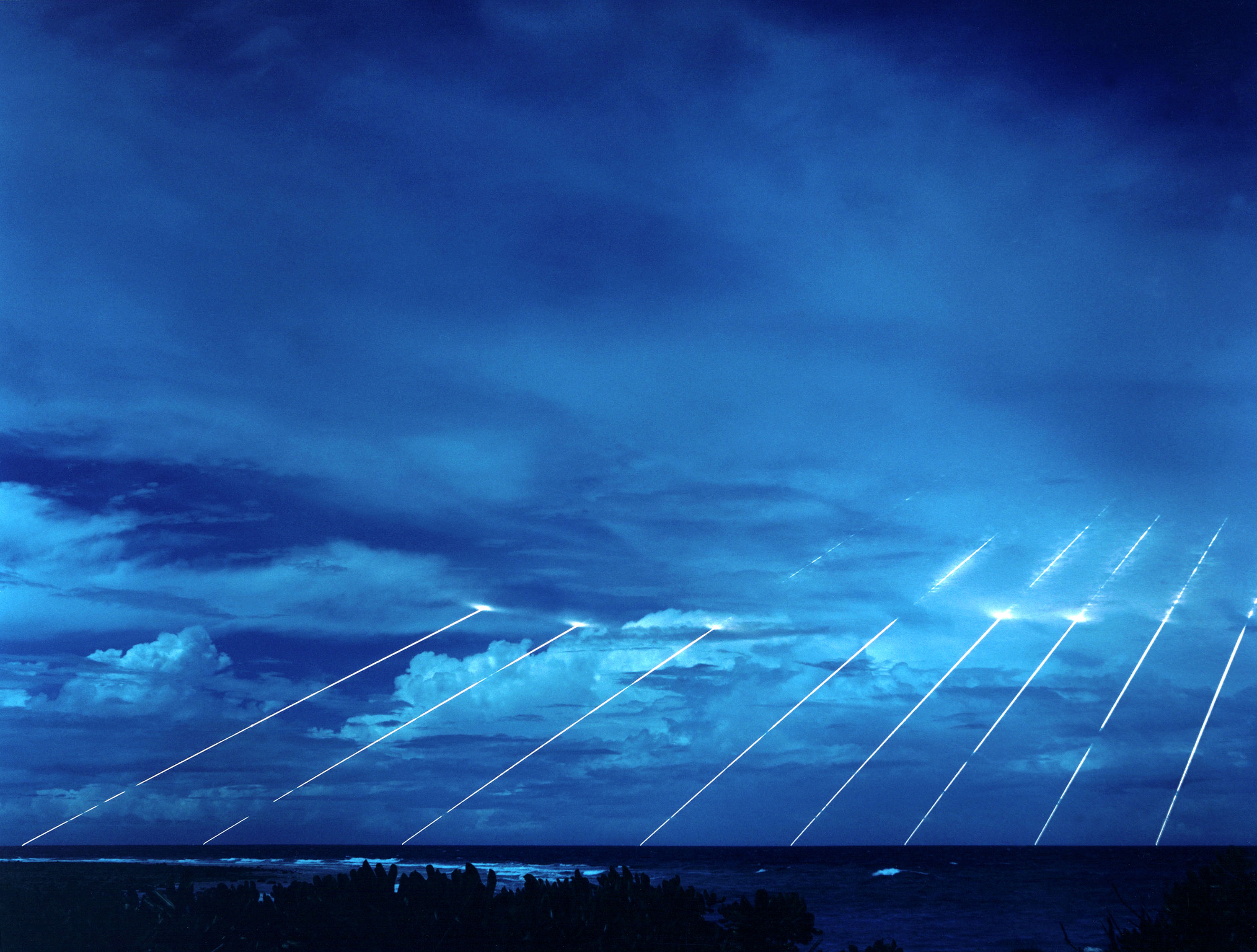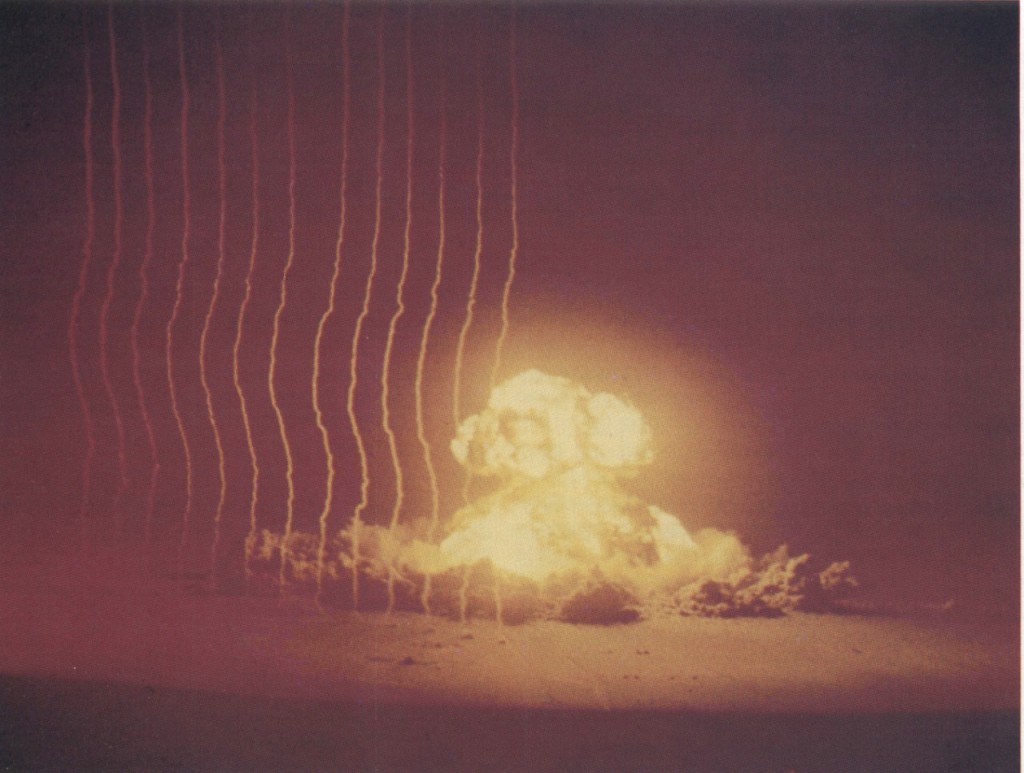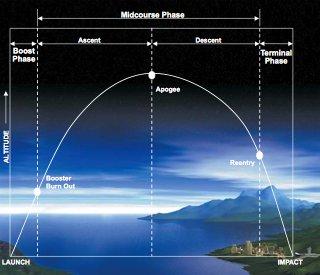There are serious technical problems (e.g. failure to shoot down a ballistic missile under almost ideal test conditions) and countermeasures facing an existing BMD system. The following article is focused primarily on China's ASBM (i.e. anti-ship ballistic missile or "carrier killer").
However, we are interested in subsections (2) and (3) on China's MARV (i.e. "a maneuverable re-entry vehicle (MARV)"). By the way, you have to click on the newslink and go to the website to access the hotlinks. The most important point is that China's "
Dong Feng MARV warhead is designed to evade Patriot and standard defense missiles."
DONG FENG MARV WARHEAD IS DESIGNED TO EVADE PATRIOT AND STANDARD DEFENSE MISSILES
http://www.informationdissemination.net/20...evelopment.html
"Saturday, March 28, 2009
PLAN ASBM development
I was contacted by Galrahn to read over a Chinese blog entry on PLAN's ASBM development (found here) and post my thoughts on it. I think that before you look further, there are some other good reads on this topic. Sean O'Connor has posted one of the better summaries on this regarding to OTH radar and ASBM threat. I have also written an entry in the past regarding ASBM threat, but it's really not that well researched. That one was based on an article that stated China has solved the difficulties surrounding hitting a moving target with a ballistic missile.
I think that the blog entry I read was definitely the best researched work on PLAN's ASBM plans.
It listed many research papers that were written in Chinese and published years ago. As a result of that, I cannot possibly confirm that some of the things I've read are actually accurate. The sources that I can confirm on the Internet do seem to conform to what he was stating. I think in order to continue, it would be beneficial to read some of the resources that he mentioned. The include:
Sinodefence's Space Page
Sinodefence's Missile Page
Xianglong UAV Page
Yilong UAV page
The first one is important, because you can look through the current and future development in China's space industry. It's important to look through the communication, IMINT and EO satellites that China will use in this system.
In the second link, the important missiles to look for are DF-21 and possibly DF-15. In the third link, it lists China's probably most recent venture into HALE UAV. It's about 2/3 the size of Global Hawk or maybe even smaller. We don't have any figure on its endurance, but one would guess it's much less than that of Global Hawk due to the smaller size and less efficient engine. Although at this point, I would think that PLAN would be fine with an Asian Hawk. And the final link is an entry with information on China's version of Predator MALE UAV. The stats listed on that page were actually from its ddescription in the Zhuhai airshow, so I can verify that they are accurate. The two UAVs are both developed by Chengdu AC (the developer of J-10), so my guess is that Xianglong's endurance is comparable to Yilong (around 20 hours).
Reading through those links + Sean's blog entry are important in appreciating the rest of the ASBM system. I will try to make this out in Q&A format:
1. What caused China to start develop this system?
There are two main causes that drove this project. The first one is USA's Pershing II project. I guess this showed PLA the accuracy that can be achieved through MaRV warhead and active radar guidance. The second one is the Taiwan incident in 1996 when PLA's powerlessness against USN carrier group was on full display.
2. When did the project start and where is it now?
China probably started researching on MaRV right after Pershing II was deployed in 1984. By 1991, China had finished research on MaRV. According to the blog, there was a famous research paper in 1994 about attacking fixed target using MaRV technology.
In 1999's national pride parade, they showed a missile with all the basic technology needed for the missile part of the ASBM system. If we look at the current status of the satellite constellations and reconnaissance platforms, we could probably say that the system has achieved some operational capability. The entire system needed for ASBM probably will not get set up until all the space assets and UAVs are online next decade.
3. Which missile are they using and what kind of improvements are they putting in?
It looks like DF-21 is the missile that ASBM is based on. It uses a solid propellant, is road-mobile, widely deployed and also have recently been improved to DF-21C. It's range of around 2000 km would perfectly cover the areas where future conflict is likely to be fought. Its range also would cover most of the areas that China's OTH-B radar would cover.
It is also large enough to carry a large warhead needed to inflict damage on carrier while also holding a more complex guidance/seeker. They have put a MaRV warhead on DF-21 for maneuverability. In order to improve the penetration capability, they have added a third stage to it to provide unpredictable movement (I think the blog described it as some kind of oscillation). They have apparently made modifications to the warhead in order to lower its radar signature. They have also added a new multi-mode seeker that apparently has an active, passive radar and infrared seeker (I'm not sure how that works). It didn't mention how the missile would counter ESM of the fleet except for improving the seeker and getting more updated info from the sources that provided it initial targeting data.
4.
What are the sources that provide targeting data for this ASBM system?
The blog basically listed 5 sources and they are:
*
Reconnaissance Satellites - I think you can look at the Ziyuan and Yaogan series of satellites that have EO, CCD and SAR sensors as possibilities here. They could also be talking about the FY series, which is actually expected to be a constellation of Earth Observation satellites. I think it's important that in the 18th Committee on Earth Observation Satellites plenary and workshop in 2004, they announced they would launch over 100 Earth Observation satellites. I don't know enough about this to comment on which specific satellites I think will be used for scanning ships, but the blog did mention that China has used FY-2 series of satellites to track movement of targets. Another possibility is launching many short duration, micro-Earth Observation satellites in times of conflict. It mentioned that China can launch a 100 kg satellite on 12 hours notice. In peace mission 05. They launched an experimental satellite on August 2nd for detection/science experiment work. This operated for 27 days and returned to earth on August 29th after the conclusion of the exercise.
*
Elint satellites - It mentioned something like USN's White Cloud Spaceborne ELINT System. The problem I have with this is that I can't find any mention of China having similar system anywhere.
*
OTH Radar - Has a range of 800 to 3000 km. The accuracy in targetting is around 20 to 30 km. This can be improved to 2 to 3 km with improved algorithm. OTH radar can work with the recon satellites to provide more accurate targeting info.
*
UAV - As mentioned above, China does have a robust UAV program going right now including the aforementioned XiangLong program. As we've seen in the Zhuhai airshow, they have numerous HALE and MALE UAV projects going. The major problem currently with Chinese UAV programs is that they simply don't have many small turbojet/turbofan engine series. As a result of having to work with what they have, the major design institute in AVIC-1 can't come up with the most optimal UAVs. I think that this will change in the next 10 years, so this part of the targeting system is behind recon satellites and OTH radar.
*
Radio post - This is problem the most confusing one for me. The blog talked about working with elint satellites (which I don't think they have) to get the location of the carrier group through communications between ships and satellites/aerial assets.
5. How does the launching/attacking process work?
I think that in times of war, they would launch many micro-EO satellites that have short duration to increase reconnaissance in the area approaching Taiwan. Similar to US, they would have HALE UAVs to do advanced scouting in front of the war zone. The OTH radar will give the base initial idea of incoming fleet. This information would be combined with data of the recon satellites to provide a more precise and more accurate targeting data. The missile would be launched to the estimated position based on initial position + velocity, but this would obviously be off. Although, I think the movement of the carrier group will not be overwhelming. If the target is 2000 km away and the missile is traveling at mach 10 (343 * 3.6 * 10 = 10,000+ km/h) , it would get there in less than 12 minutes. During that time, if the fleet moves at 30 knots, it would move at most 6 knots or around 11 km from the original location. Still, if we add this to the initial precision problems of OTH radar + EO satellite, this could still cause the fleet to be outside the scanning area of the ASBM. In the cruising process, the missile would have to continuously communicate with the base through those new Data relay satellites (like TianLian-1 that they launched recently) to get more improve the precision. The ASBM will also likely veer off the path at this time, so it would need communication with Beidou-2 constellation in order to keep it on track. When it gets close to the target, the blog talked about 3 phases in its attack: high altitude guidance, high altitude gliding and low altitude guidance. I'm really not sure how accurate is the blog's description of the process. Its general theme is slowing down the speed of the missile as it gets closer to the target to maybe give the seeker more time to lock on to target and make unpredictable movements to penetrate defense.
6. What is the operational status of this system?
From all the past sources I've read, it seems like PLAN already considers this system to have achieved IOC. Normally, I don't read about a certain capability developed in a Chinese military magazine until after it is attained. From reading through different sources, it looks like IOC was probably in 2007 or 2008. As mentioned before, more elements in the system like UAV and satellites are getting added as time goes on, so I look at this as a continuously evolutionary process.
7. How beneficial is this system?
That I really would have no idea. I wouldn't even know how much damage would 1 missile cause on a carrier. I would think that if this system can even temporarily put one carrier out of commission and/or keep carrier groups further out from the mainland, it would've achieved its purpose.
8. Are there other launch platforms to this system?
I always thought that an-air launched version of ASBM from JH-7A is possible. There are certainly a large variety of short range ballistic missiles that JH-7A would be able to carry and provide updates for. I have not thought about launching ASBM from a SSBN, since that could easily be mistaken for a nuclear missile.
That's about it. I think a lot of resources on this are available to form an opinion.
Posted by Feng at 7:02 PM"








